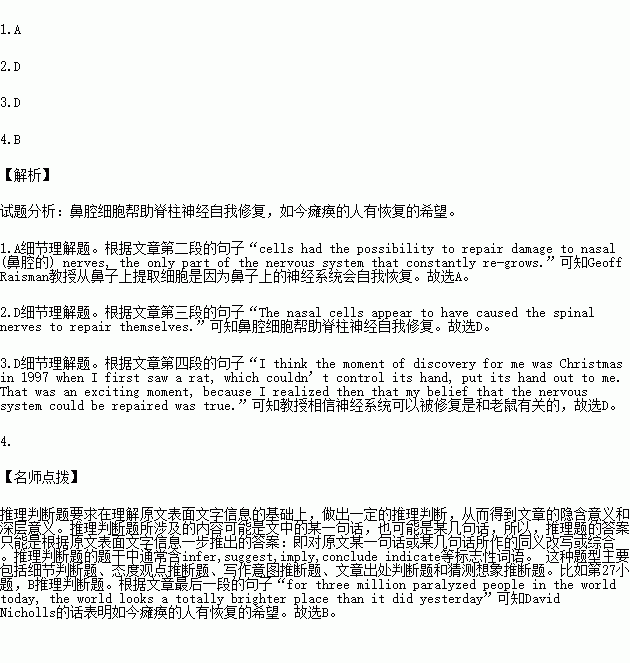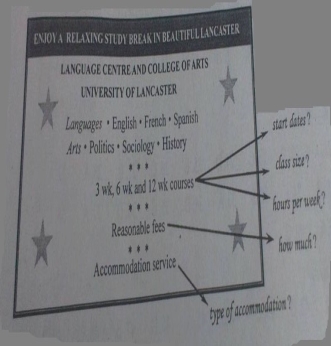题目内容
Darek Fidyka, a 38-year-old Bulgarian, had been paralyzed (瘫痪的) from the chest down for four years after a knife attack. Scientists from Britain and Poland took cells from his nose, transplanted (移植) them into his back and re-grew his spinal cord (脊髓). Now he can walk and even drive a car. The doctors were delighted but said it was the first step in a long journey.
The breakthrough came after 40 years of research by Professor Geoff Raisman, who found that cells had the possibility to repair damage to nasal (鼻腔的) nerves, the only part of the nervous system that constantly re-grows. “The idea was to take something from an area where the nervous system can repair itself and put it into an area that doesn’t repair itself,” Professor Raisman said.
Polish doctors injected (注射) the nasal cells into Mr Fidyka’s spinal cord above the injury and used some nerves from his ankle to form a bridge across the damaged tissue. The nasal cells appear to have caused the spinal nerves to repair themselves.
Professor Raisman achieved this with rats in the late 1990’s, but this is his greatest success. “I think the moment of discovery for me was Christmas in 1997 when I first saw a rat, which couldn’t control its hand, put its hand out to me. That was an exciting moment, because I realized then that my belief that the nervous system could be repaired was true.”
Doctors chose the easiest case for their first attempt—it might not work for others. But there is a real sense of hope that an idea once thought impossible has been realized.
David Nicholls, who helped provide money for the breakthrough, said information about the breakthrough would be made available to researchers across the globe.
“What you’ve got to understand is that for three million paralyzed people in the world today, the world looks a totally brighter place than it did yesterday,” he said.
1.Why did Professor Geoff Raisman choose cells from the nose?
A. The nervous system in the nose can repair itself.
B. Cells from the nose can be easily transplanted.
C. The nervous system in the nose has more cells.
D. Cells in the nose are able to re-produce rapidly.
2.How did the operation work for Darek Fidyka?
A. The nervous system in the spinal nerves can repair itself.
B. The nerves from his ankle cured the patient of the injury.
C. The nasal cells re-produced and spread over very quickly.
D. The nasal cells helped the spinal nerves to repair themselves.
3.What made Professor Geoff Raisman begin to believe the nervous system can be repaired?
A. His former study with other people.
B. His operation on a paralyzed patient.
C. His sudden thought about Christmas.
D. His unusual experience with a sick rat.
4. David Nicholls’ words suggest that _______.
A. the world will become a better and brighter place
B. paralyzed people of today have the hope of recovery
C. the report of the breakthrough will be published soon
D. researchers across the world will carry out the operation
 天天向上一本好卷系列答案
天天向上一本好卷系列答案 小学生10分钟应用题系列答案
小学生10分钟应用题系列答案

 x months, the deserted plant faded away.
x months, the deserted plant faded away.